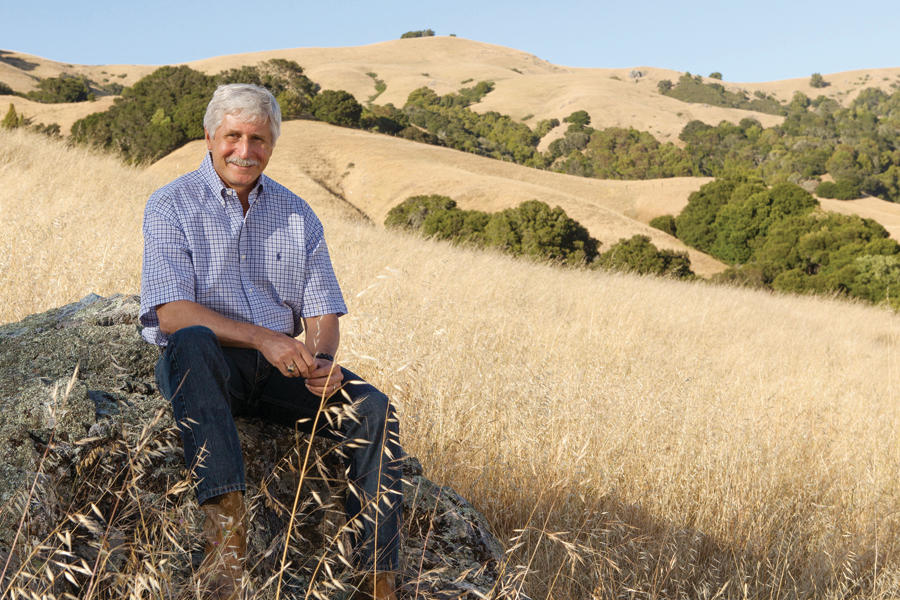A Different Kind of Runoff
Back to that mud. Each county and municipality can write its own water runoff regulations, and for dealers operating in multiple counties it can be a nightmare. Mensinger says the state’s Water Board, which sets and defines the basis for runoff regulations, is not very business-oriented or open-minded. He owns a three-acre facility and says that with such a large property it’s difficult to regulate how water leaves his yard. “That’s the kind of issue that could really hurt us,” he says.
Its agency versus agency sometimes, says Mensinger, which only adds to the dysfunctional nature of state government. He recalled one board’s meeting on runoff rules where the head of another state agency said the board should just fine him now because he knew there was no way he could meet the requirements.
While other states might not have water rules as tough as California’s, odds are that just about all states will be tackling questions of how to prevent polluting waterways. So will the U.S. Environmental Protection Agency (EPA). On June 25, the agency announced Toll Brothers will pay a civil penalty to $741,000 to resolve alleged violations of the Clean Water Act at its construction sites. EPA had alleged Toll Brothers committed more than 600 violations of rules on stormwater runoff.
Blue Talk About Clearing the Air
Carbon emissions pose another area that not only may give dealers headaches, but also may dent their wallets. Here again California leads; in early 2008, the state sued the EPA for dragging its feet on granting a waiver to California so it could create tougher standards than the federal Clean Air Act imposed. Since then, states from Maine to New Mexico have adopted auto-pollution standards developed by the California Air Resources Board (CARB).
Golden State dealers’ latest airborne sickness began at the end of 2008, when CARB approved a regulation to significantly reduce particulate matter produced by buses and trucks. According to CARB’s website, the regulation focuses on the reduction of particulate matter caused by diesel engines on trucks with a gross vehicle weight greater than 14,000 pounds.
In 2015, the reg will require accelerated replacements for heavy and light vehicles that lack particulate matter filters. From 2020 to 2023, all older vehicles must be upgraded to meet emissions levels of 2010 models.
Mensinger spent $130,000 on new forklifts in 2008 and 2009 and still is shelling out cash to make sure his delivery fleet meets emission codes. He says air quality needs to get better at his home base in northern San Joaquin County, but worries what it will cost him to follow the rules. At CVBS, Patterson says the change means trucks probably won’t stay in the fleet for the 10 years or so that used to be the standard.
A few dealers have gone so far as to argue the validity of the data CARB uses to justify its regulations. “This is expected to cost the California trucking industry upwards of $20 billion,” Venezia says. CVBS went so far as to hire a fleet manager to oversee everything and make sure the fleet was up to code. Patterson monitors data, emissions, and how CVBS is doing.
“I feel that as a business we are in good shape, but we had to be proactive about it,” says Patterson.
Aggressive by Nature
California has long been known for its green-focused and often visionary building codes and regulations. Areas such as Southern California and the San Francisco Bay region have done for fire and earthquake codes what Miami-Dade County has done for hurricanes, and California homes were getting sprinkler systems as early as the 1980s.
Glen Andersen, energy program director at the National Conference of State Legislatures, says that states such as Florida, Minnesota, and Massachusetts are also developing strong green and energy efficient building practices, but they’re more modest than what’s happening in the Golden State. “California is really known for being one of the most aggressive states on efficiency,” Andersen says.
California’s green building practices have been bolstered by a number of legislative acts passed by the state’s government. One of the most prominent and most talked-about pieces of legislation to come out of California is Assembly Bill 32, the Global Warming Solutions Act.
The legislation promotes energy efficiency in part by writing into law the state’s greenhouse gas emissions goal for 2020. It features a number of phase-in dates and involves cap and trade measures limiting the amount of emissions companies can release. Brian Hill, a Camarillo, Calif.-based remodeler/new home builder, says builders are already focusing on energy efficiency regs for larger spaces, such as hotels and commercial sites.
California’s energy efficiency standards are more stringent than the 2009 International Energy Conservation Code. The state also was the first in the country to adopt its own green building standards, called CALGreen, which took effect in January 2011.
Other codes in the state that may have a big future impact on building across the country include a recent rule that makes it a requirement for new homes to be built so that the roofs can support solar panels. The houses do not have to necessarily have such panels installed immediately, but should be ready to support them.
California may be the fabled land of Hollywood and celebrities and dreams coming true, but it’s also a land of severity: severe weather, severe geography, severe costs … and above all for dealers, severe regulations. Much of what’s standard for them could become the rule far away from the Left Coast in the not-too-distant future.



